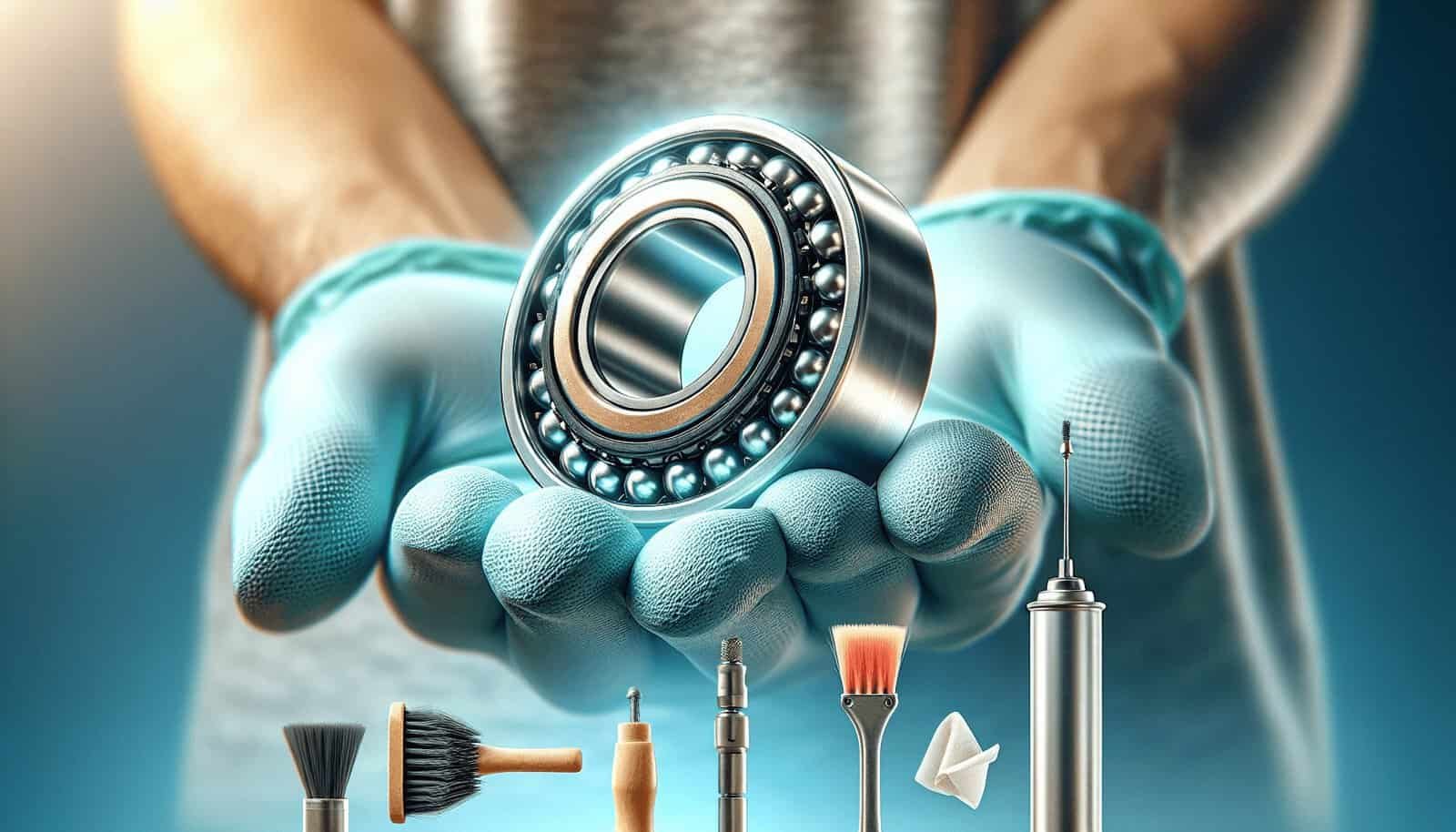Hey there! Keeping your electric scooter in tip-top shape ensures a smooth ride every time. In the article “What Is The Proper Way To Clean And Maintain The Bearings On My Electric Scooter?” you’ll discover practical steps to properly clean and maintain those crucial bearings. From identifying the necessary tools to the actual cleaning process and lubrication tips, this guide has got you covered. Get ready to give your scooter the TLC it deserves and enjoy longer, zippier rides! Have you ever wondered about the proper way to clean and maintain the bearings on your electric scooter? If you’re a proud owner of an electric scooter, you know how essential it is to keep your trusty ride in top condition. Proper maintenance, especially of the bearings, can vastly improve your scooter’s lifespan and performance.
Welcome! In this friendly and informative guide, we’ll cover everything you need to know to clean and maintain the bearings on your electric scooter. Whether you’re a seasoned scooter rider or just starting out, you’ll find valuable information here to help you keep your scooter running smoothly.
What Are Bearings and Why Are They Important?
Bearings are crucial components that facilitate smooth rotation between parts in mechanical systems. In the case of electric scooters, bearings are typically located in the wheels and moving joints. Their primary function is to reduce friction, allowing for smooth and efficient movement.
Types of Bearings in Electric Scooters
Understanding the type of bearings in your electric scooter can help you maintain them better. Here are the common types:
- Ball Bearings: These are the most common type, consisting of a series of balls sandwiched between two circular raceways.
- Needle Bearings: These consist of long, thin cylindrical rollers, used when space is limited.
- Thrust Bearings: Designed to handle axial loads.
Each type has unique maintenance requirements, so it’s essential to recognize what your scooter uses.
How to Identify When Bearings Need Maintenance
It’s vital to recognize when your bearings need attention. You’ll avoid severe wear and costly repairs by identifying issues early. Look out for the following signs:
- Noise: Grinding or squeaking sounds.
- Vibrations: Unusual vibrations can indicate bearing problems.
- Heat: Excessive heat around the bearings area.
- Poor Performance: Decreased speed or efficiency.
Simple Tests to Check Bearing Condition
You can perform a few simple tests to check the bearing condition of your electric scooter:
Spin Test
Lift your scooter so that the wheels are off the ground and spin them manually. The wheels should spin freely and smoothly. If you notice any resistance or hear unusual noises, it might be time to clean or replace the bearings.
Wobble Test
Try to move the wheels side to side while they are mounted on the scooter. There should be minimal play. Significant wobble can indicate bearing wear or a need for adjustment.

Tools and Materials Needed for Cleaning and Maintenance
Preparation is key to a successful maintenance session. Here’s a list of tools and materials you’ll need:
Essential Tools
| Tool | Purpose |
|---|---|
| Screwdrivers | Removing wheels and access to bearings |
| Wrenches | Loosening and tightening nuts and bolts |
| Pliers | Helpful for gripping and prying components |
| Rubber Mallet | For gentle taps without damaging parts |
Cleaning Materials
| Material | Purpose |
|---|---|
| Isopropyl Alcohol | Cleaning bearings without leaving residue |
| Small Brushes and Swabs | Reaching tight spaces and scrubbing |
| Clean, Lint-Free Rags | Wiping down components |
| Lubricant (Silicone-based) | Reducing friction and protecting bearings |
Protective Gear
For safety, always wear gloves and safety goggles when working on your scooter.
Step-by-Step Guide to Cleaning Bearings
Proper cleaning can make a world of difference in your bearing performance. Follow these steps for a thorough clean:
Step 1: Disassemble the Wheels
- Lift the Scooter: Lift the scooter using a stand or a sturdy support.
- Remove the Wheels: Use the wrench and screwdrivers to remove the bolts and detach the wheels.
Step 2: Remove the Bearings
- Locate Bearings: Identify the bearing encasements.
- Extract Bearings: Carefully use the pliers to remove the bearings from the wheel hub.
Step 3: Clean the Bearings
- Initial Wipe: Use a rag to wipe off excess dirt and grime.
- Soak in Alcohol: Place the bearings in a container filled with isopropyl alcohol. Let them soak for 15-20 minutes.
- Brush and Swab: Use small brushes and swabs to clean out remaining dirt.
- Rinse: Rinse with fresh isopropyl alcohol to remove any debris left behind.
Step 4: Dry the Bearings
After cleaning, carefully dry the bearings with a clean, lint-free rag. Ensure they are completely dry before reassembly to prevent rust.
Step 5: Lubricate the Bearings
- Apply Lubricant: Use a silicone-based lubricant. Apply a small amount and rotate the bearing to ensure even distribution.
- Wipe Excess: Remove any excess lubricant to avoid attracting dirt.
Step 6: Reassemble the Wheels
- Place Bearings Back: Place the cleaned, lubricated bearings back into the wheel hub.
- Reattach Wheels: Secure the wheels back onto the scooter using the screws and bolts.

Regular Maintenance Tips
Keeping your bearings in top condition isn’t just a one-time job. Incorporate these tips into your routine maintenance to ensure longevity and optimal performance:
Tip 1: Schedule Regular Checks
Make it a habit to check your bearings every few weeks or after extensive rides. Early detection of issues can prevent serious damage.
Tip 2: Clean After Wet Rides
If you ride in wet conditions, clean your bearings immediately after to avoid corrosion. Water can significantly accelerate wear and tear.
Tip 3: Use Quality Lubricant
Always use high-quality, silicone-based lubricants. Poor quality lubricants can attract more dirt and grime, causing faster wear.
Tip 4: Keep Riding Surfaces in Mind
Riding on smooth, clean paths will put less strain on your bearings compared to rough or dirty terrains.
Tip 5: Store Properly
Store your scooter in a dry, cool place. Extreme temperatures and humidity can affect bearing performance.
Common FAQs About Bearing Maintenance
Getting started with bearing maintenance can raise several questions. Here are some common queries and their answers:
How often should I clean my bearings?
It’s advisable to clean your bearings approximately every three months, or more frequently if you ride under harsh conditions.
Can I use water to clean my bearings?
Avoid using water as it can lead to rust. Isopropyl alcohol is a safer alternative that doesn’t leave residue or cause corrosion.
What kind of lubricant should I avoid?
Avoid using grease-based or thick lubricants. They can attract dirt and grime, leading to more frequent maintenance needs.

Troubleshooting Bearling Problems
Even with regular maintenance, you might face issues. Here’s how to troubleshoot common bearing problems:
Problem: Noise and Vibration
- Check for Dirt: Clean the bearings thoroughly.
- Inspect Lubrication: Ensure they are correctly lubricated.
- Examine for Damage: Look for any signs of visible damage. If damaged, replace the bearings.
Problem: Reduced Performance
- Lubricate: Poor lubrication can cause friction and reduce efficiency.
- Check Tightness: Over-tightening can press the bearings too hard, impeding free movement.
Problem: Excessive Heat
- Inspect Alignment: Misaligned components can cause additional strain and heat.
- Ensure Sufficient Lubrication: Dry bearings can generate heat due to friction.
When to Replace Bearings
Bearing maintenance can prolong their life, but they will eventually need replacing. Here’s how to determine when it’s time:
Signs That Indicate Replacement
- Persistent Noise: Despite cleaning and lubricating, noise persists.
- Visible Damage: Cracks or severe wear.
- Poor Performance: Inconsistent performance even after maintenance.
How to Replace Bearings
To replace bearings, follow the same disassembly steps as for cleaning. Once you remove the old bearings, install the new ones and ensure they are properly lubricated before reassembling the wheels.

Additional Tips for Enhancing Scooter Performance
Maintaining your scooter’s bearings is crucial, but it’s just one part of the overall upkeep. Here are additional tips to keep your scooter in optimal condition:
Regularly Check Other Components
Periodic inspection of other parts like tires, brakes, and battery can ensure comprehensive maintenance.
Keep the Scooter Clean
Regularly cleaning your scooter helps prevent dirt and grime buildup, which can affect various components, including bearings.
Use Protective Covers
Invest in protective covers, especially if you often ride in rough conditions. They can shield critical parts from debris and moisture.
Professional Servicing
Occasionally, take your scooter for professional servicing. Experts can identify and fix issues that might not be apparent during regular maintenance.
Final Thoughts
Maintaining the bearings on your electric scooter might seem like a small task, but it can make a significant difference in performance and longevity. With proper cleaning, regular checks, and timely lubrication, your scooter will glide smoothly and efficiently. Remember, a well-maintained scooter is not just a joy to ride but also a cost-effective and reliable mode of transport.
So next time you hear unusual noises or feel a bit of resistance, you’ll know exactly what to do. Happy scooting, and may your rides always be smooth!

